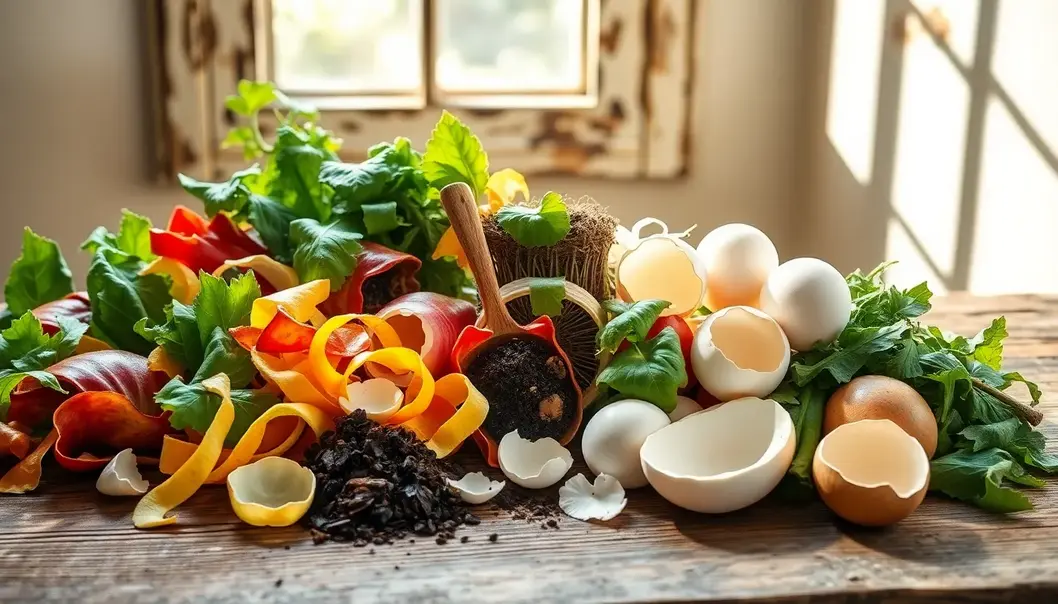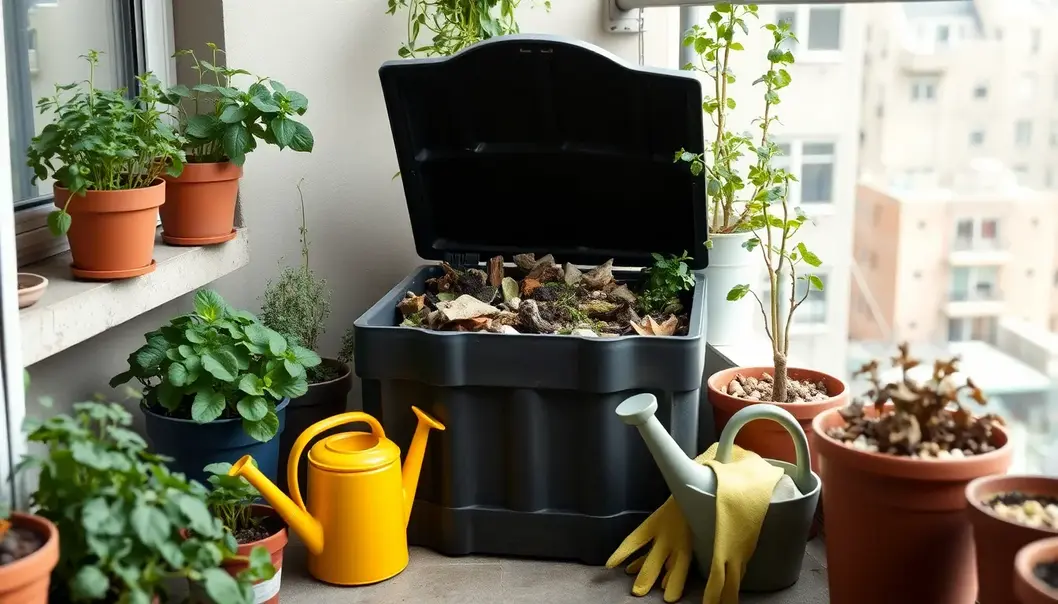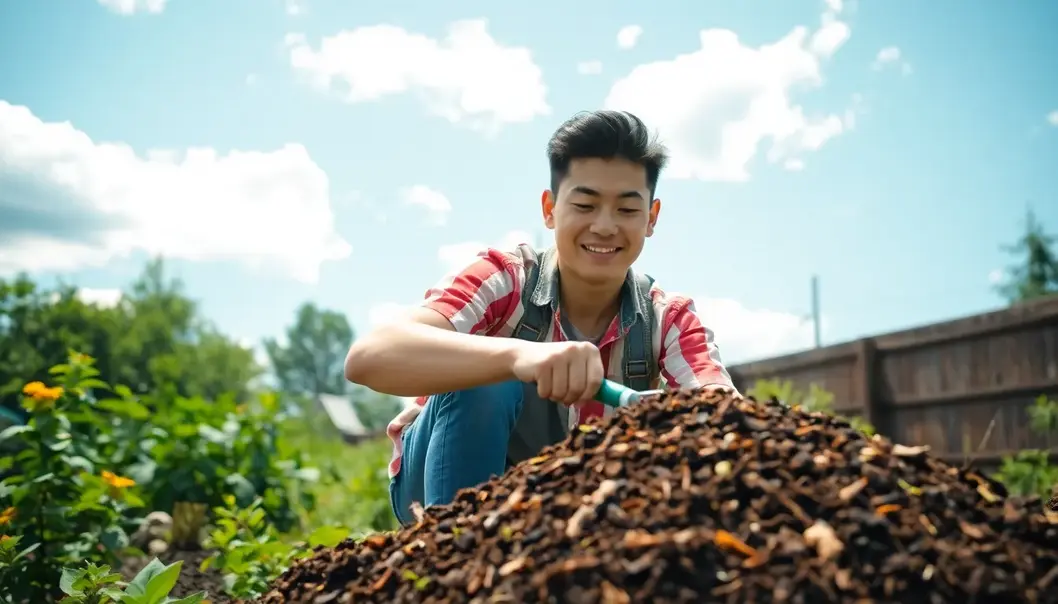Composting is nature’s way of recycling, allowing you to turn everyday waste into rich, valuable soil for your plants. If living sustainably is on your to-do list, composting is a key practice that’s simple to start and rewarding in the long run. It doesn’t matter if you’re in a cozy city apartment or sprawling suburban home; anyone can join the compost club! We’re diving into the essentials of getting started with composting—breaking down the basics and helping you turn yesterday’s scraps into tomorrow’s green gold.
Chapter 1: The Dirt on Composting Basics

Composting is nature’s way of recycling organic material into a nutrient-rich substance called humus, which enhances soil quality and supports plant growth. Understanding composting begins with grasping the fundamental process of decomposition, wherein microorganisms break down dead plant and animal matter, transforming it into a stable, earthy material that serves as a natural fertilizer.
The benefits of composting extend far beyond enriching your garden. By reducing the volume of waste sent to landfills, composting plays a crucial role in mitigating methane emissions, a potent greenhouse gas. Additionally, it enriches soil, helping retain moisture and reducing the need for chemical fertilizers. Composting also encourages the production of beneficial bacteria and fungi, contributing to a healthier garden ecosystem.
When beginning your composting journey, it is essential to know what can and cannot be composted. Compost-friendly items include fruit and vegetable scraps, coffee grounds, eggshells, yard waste like grass clippings and leaves, and shredded paper. Avoid composting meat, dairy products, oils, and diseased plants, as they attract pests and may introduce pathogens. Also, stay away from glossy paper and synthetic materials.
Setting up a composting system suitable for your urban space involves a balance of practicality and space management. For apartment dwellers, vermicomposting, which uses worms to break down organic matter, is a compact and efficient solution. It requires a small container and provides quick results. Suburban homes with a garden may opt for traditional composting bins or piles, utilizing yard space for larger compost volumes. For those in the countryside, larger setups are feasible, accommodating various organic waste quantities.
Different methods cater to different environments and preferences. Traditional composting relies on aeration, turning, and layering greens and browns to decompose material over weeks or months. Vermicomposting is ideal for small spaces, as it quickly transforms kitchen scraps into nutrient-rich worm castings with minimal odor. Bokashi composting involves fermenting organic waste using a specialized bran. This method can handle a wider range of materials, including meat and dairy, and is excellent for reducing waste volume in urban settings.
Mastering the art of composting is a rewarding endeavor, especially in urban areas where space may be limited. As you proceed to explore the practical steps and techniques for setting up your own compost system in the following chapter, keep in mind the environmental impact your efforts can have. By composting, you are not only enhancing your own garden but contributing to a more sustainable world.
Chapter 2: Step-by-Step Guide to Starting Your Own Compost

Creating your own compost in an urban space might seem like a daunting task, but with the right approach, it becomes manageable and fulfilling. Start by selecting a spot in your home, whether it be a balcony, a corner of your kitchen, or even under the sink, depending on your available space. Urban dwellers can benefit from compact options like a vertical composting system or a worm bin for vermicomposting, which utilize minimal space while maximizing efficiency.
Tools and Techniques
First, gather some basic tools. You will need a compost bin, which you can purchase or make yourself using a plastic container or wooden box with holes drilled for aeration. A good pair of gloves, a pitchfork or turning implement, and a thermometer are also advisable. The thermometer helps in monitoring the temperature, especially for those interested in hot composting.
The Balance of Greens and Browns
Achieving the right balance of greens (nitrogen-rich materials) and browns (carbon-rich materials) is crucial for effective composting. Greens include kitchen scraps like fruit and vegetable peelings, coffee grounds, and grass clippings. Browns are materials such as dried leaves, shredded paper, and cardboard. Aim for a ratio of roughly two parts browns to one part greens. This balance ensures microbial activity is optimized, encouraging efficient decomposition.
Moisture and Aeration
Moisture is essential in composting. If it feels as damp as a wrung-out sponge, it’s likely just right. Too dry, and decomposition slows; too wet, and it becomes a breeding ground for unwanted odors. Regularly check your compost and adjust by adding water or more dry browns as needed. Aeration, or the introduction of oxygen, keeps your compost from becoming anaerobic and smelly. Turn your compost pile every week using your pitchfork to keep the air circulating.
Common Challenges and Solutions
Beginners often face issues such as foul odors, pests, or a slow decomposition rate. Odors usually stem from too much moisture or an imbalance in materials; adjust by adding more browns or turning the pile more frequently. To ward off pests like rats or flies, maintain a good balance, and ensure food scraps are buried.
Composting Methods
Urban composters can explore methods like cool, warm, or hot composting. Cool composting is the simplest but slowest method, requiring minimal management. Warm composting, achieved by maintaining a small degree of warmth, hastens decomposition, while hot composting demands a fast-paced, actively managed approach, with temperatures reaching up to 140°F. This method is the fastest and reduces weed seeds and pathogens.
When Is Your Compost Ready?
So how do you know when your compost is ready? Finished compost is dark, crumbly, and earthy-smelling. It should no longer look like the original materials you added. Generally, with active management, your compost can be ready within three months, although conditions and methods vary this timeline.
With patience and diligent care, your urban composting efforts can transform waste into rich, valuable soil for your plants. As you refine your technique and experiment with different methods, you’ll discover the satisfaction that comes from completing the natural cycle of nutrients right in your urban space.
Final words
Composting is an enriching journey that offers numerous environmental benefits while reducing your waste footprint. Whether you opt for a small kitchen compost setup or a larger outdoor system, the key is to remain consistent and patient. With the tips and guidance provided, you’re now equipped to transform waste into a vibrant life force for your garden, supporting sustainability every step of the way.
Ready to kickstart your composting journey? Join our community for tips and inspiration!
Learn more: https://www.greenlivingguide.com/composting-community
About us
Green Living Guide provides resources and community support for sustainable living enthusiasts, offering expert advice, eco-friendly product recommendations, and a vibrant network of like-minded individuals committed to making a positive environmental impact.

